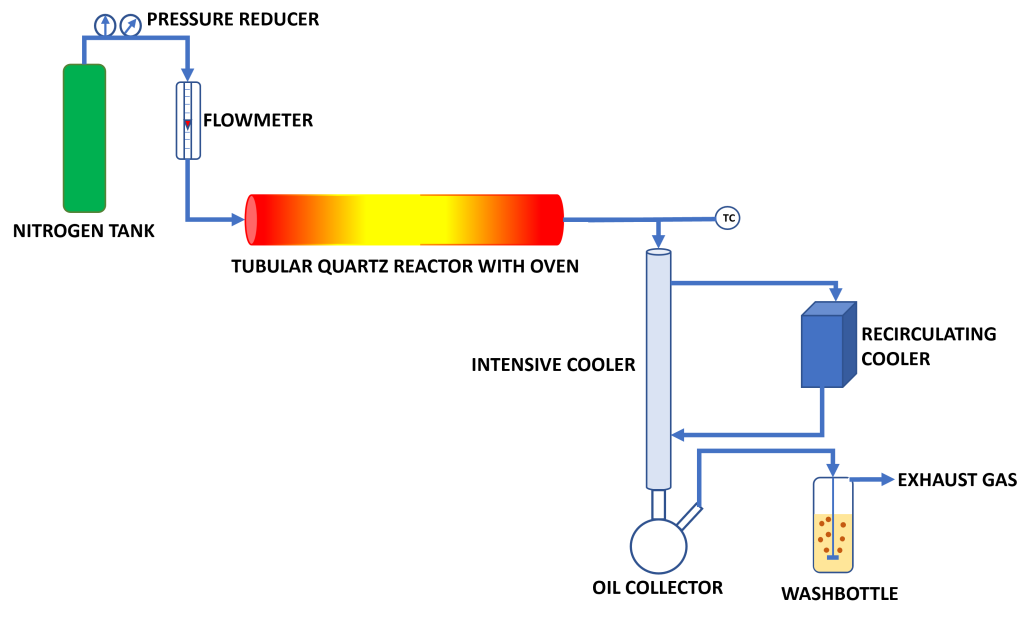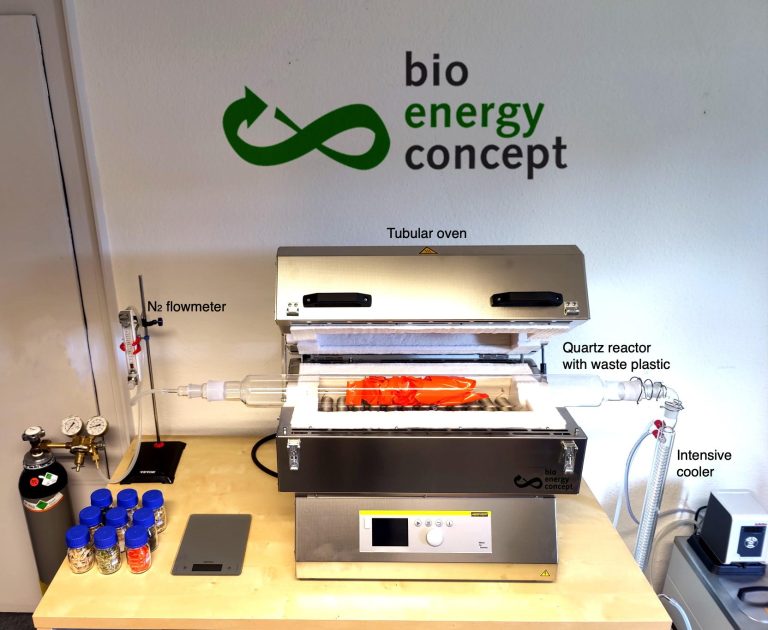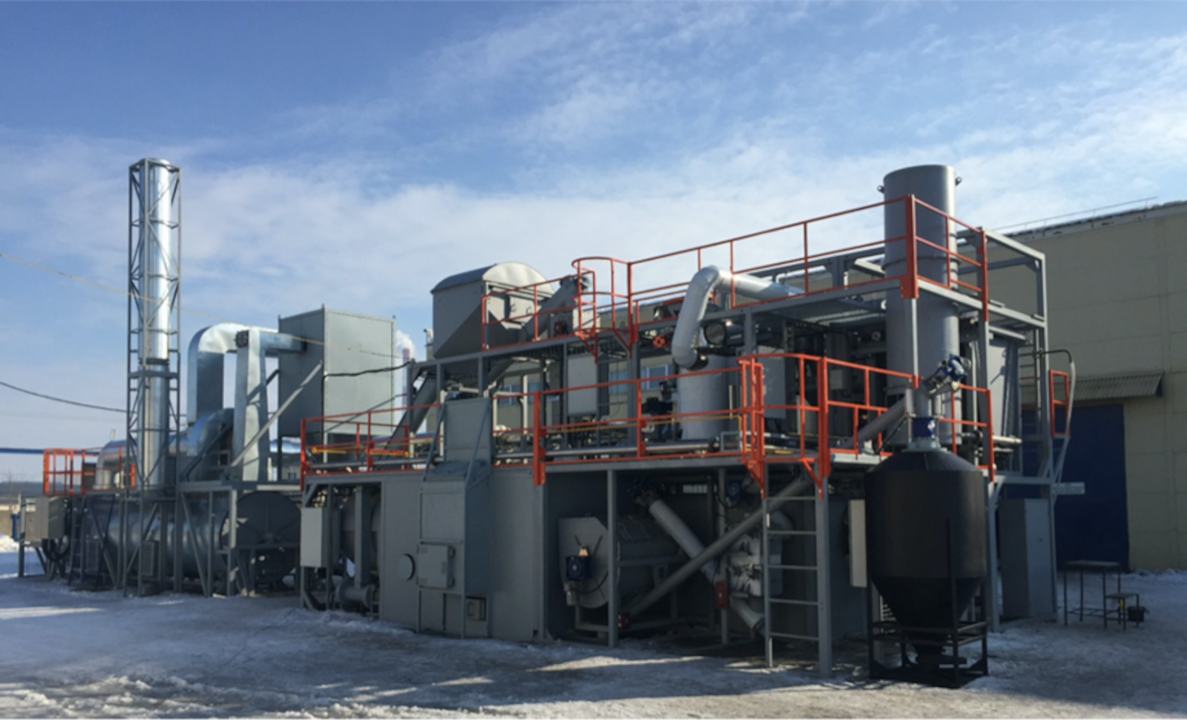Laboratory Pyrolysis Test Rig
Feedstocks like packaging, waste wood or rubber lead to various output products with different properties. The properties of these products change due to the design and construction of the pyrolysis plant. Therefore, we developed a laboratory pyrolysis test rig to test the pyrolysis of any material on a small scale.

The Pyrolysis Test Rig creates the opportunity to carry out:
- realistic tests
- on a manageable scale
- in order to test basic parameters
- and process engineering specifications of the different feedstocks.
The results obtained in this way form the basis for the design and construction of larger plants with a throughput on a ton scale, such as those already operated by bioenergy concept GmbH for waste wood in California, USA.
The Pyrolysis Test Rig allows:
- to obtain sufficient quantities of data and products to create mass and energy balances on the basis of the results
- to draw up mass and energy balances
- to realistically estimate the product utilization
- to start the engineering, so that the industrial implementation can be planned and realized on a realistic scale
A wide variety of feedstocks can be tested:
- Plastics (chemical recycling for renewed plastic production)
- Sewage sludge (extraction of fuels and fertilizers, recovery of phosphorus)
- Forest residues (extraction of bio-oil as a substitute for fuel oil and vegetable charcoal for agriculture)
- Beech wood (extraction of smoke flavorings for the food industry)
- Tar paper (recycling of bitumen for reuse in asphalt production)
- Lignin (residues from biorefineries for the production of reactive phenols for the chemical industry)



Together with our partners we provide an unique solution in both slow and fast pyrolysis technology based on the products requirements (Bio-Char, Bio-fuel, Bio-Tar and Wood Vinegar). These compact systems can be extended by further modules and easily skid mounted and shipped.
How does Pyrolysis work?
A pyrolysis plant is designed for the thermochemical processing and utilization of biomass and other organic polymeric wastes to produce liquid and organic products as well as fine char.
There are various types of pyrolysis technologies, but the process is always the same:
The heart of each plant is the reactor. Here, heat is used to thermally crack the dry feedstock, excluding oxygen. At the microscopic level, organic compounds are split and large molecules are broken down into smaller ones without combustion due to the exclusion of air. Far less CO₂ and energy is released from the feedstock, which leads to new energy-rich reaction products. A vapor-gas mixture and fine coke is produced.
In the following step, the mixture is separated from the charring dust. During a cooling process, the condensation of the mixture separates the liquid pyrolysis products (bio-oil) from the flammable gases.

